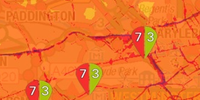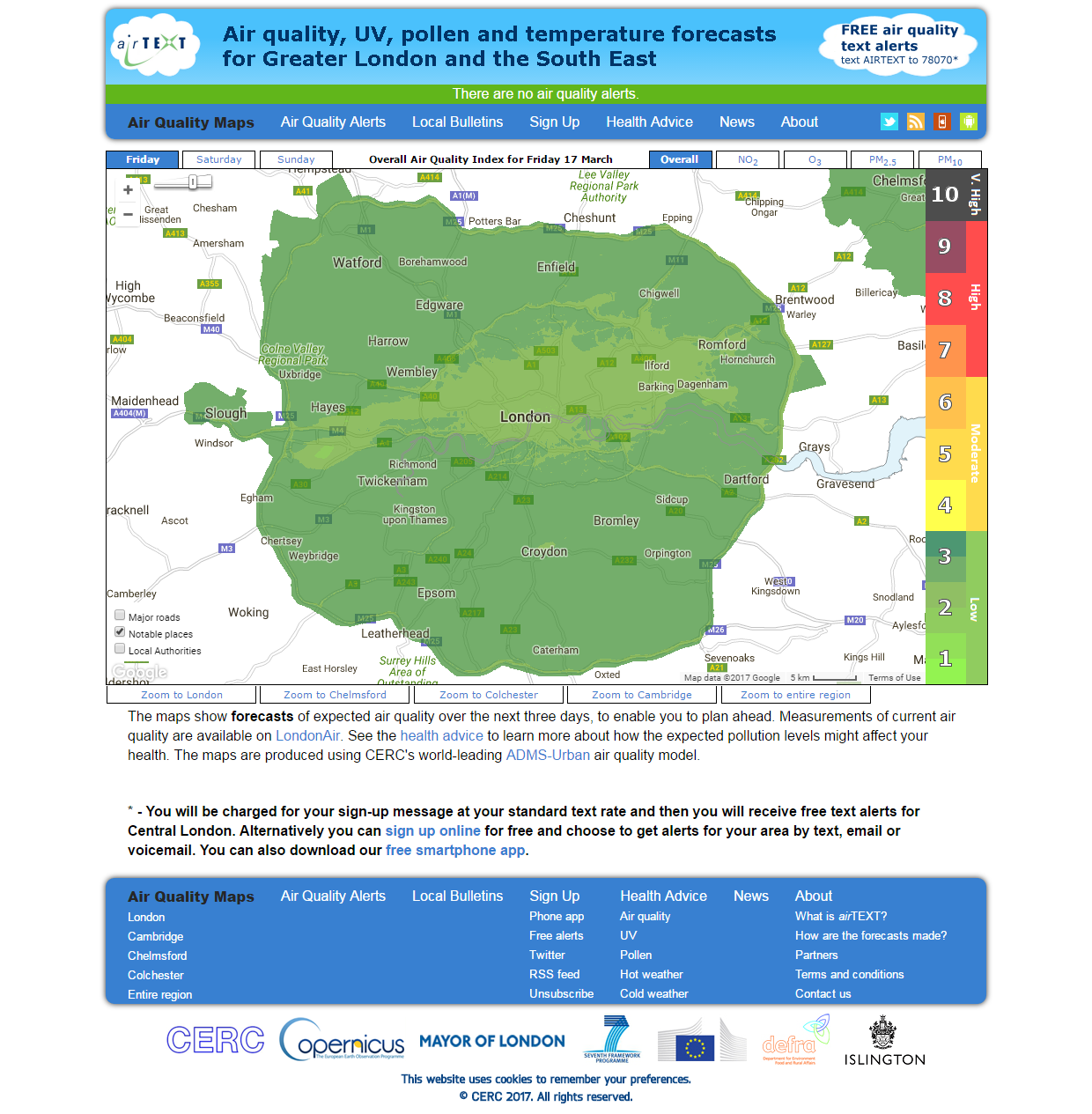
Forecasting the air quality in London and South East England: airTEXT

airTEXT is a free air quality and health information service for the public in London and parts of the South East of England. It provides air quality forecasts for three days in advance for O3, NO2, PM10 and PM2.5.
People who sign up to the airTEXT pollution alerts receive voice, email or text messages when air pollution is forecast to be moderate or higher. The service is aimed at people who suffer from heart and breathing problems, whose health or quality of life may be affected by air pollution. airTEXT has provided forecasts since 2007.

airTEXT air quality maps are created using CERC's world-leading urban air quality dispersion modelling system ADMS-Urban. Information from weather forecasts, forecasts of pollution across Europe from the Copernicus Atmosphere Monitoring Service (CAMS) Regional Ensemble and very detailed data on about 30,000 pollution sources across London are fed into ADMS-Urban to produce forecasts of air quality at a high degree of spatial resolution (10 metres). These forecasts are issued twice a day at about 7am and 7pm. The forecasts are updated throughout the day using real-time monitoring data from LondonAir.
The hourly concentrations of four pollutants are calculated: nitrogen dioxide (NO2), particulates (PM10 and PM2.5) and ozone (O3). From the hourly concentrations the daily air quality index (DAQI) of each pollutant is derived. The overall air quality index is determined by the highest index for any of these pollutants. airTEXT issues an alert for a local authority or region if at least 10% of the geographical area is predicted to reach MODERATE or above.
The accuracy of the forecasts is assessed by comparing with observed pollution levels. These performance statistics are available here.
The forecasts are available through API for use in third party services, such as local authority websites or mobile phone apps. Please contact us if you would like to discuss using the API in this way.
The airTEXT Consortium is a consortium of participating local authorities, the Greater London Authority, Environment Agency and Health Protection Agency. Defra and GLA have provided funding for the development of the forecasts. airTEXT has also benefited from support from the EU under its Copernicus and FP7 programmes.


